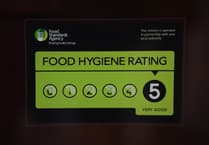HER Majesty’s Revenue and Customs (HMRC) is calling on people to stay vigilant in the fight against fraudsters who are using e-mail and text messages to scam them out of their savings.
The tax authority is currently processing tax refunds after the end of the 2017/18 tax year. However, criminals are taking advantage of this by sending out scam e-mails and SMS messages to trick the public into thinking they have received a tax rebate so they hand over their account and personal details.
Treasury Minister Mel Stride, the financial secretary to the Treasury, said: “HMRC only informs you about tax refunds through the post or through your pay via your employer. All e-mails, text messages, or voicemail messages saying you have a tax refund are a scam. Do not click on any links in these messages and forward them to HMRC’s phishing e-mail address and phone number.
“We know that criminals will try to use events like the end of the financial year, the self-assessment deadline, and the issuing of tax refunds to target the public and attempt to get them to reveal their personal data. It is important to be alert to the danger.”
Many of these fraudulent e-mails and texts include links which take the user to dubious websites where their information can be stolen. These sites are a focus of HMRC’s efforts to tackle fraud.
In March 2018, it requested 2,672 phishing websites be taken down and received 84,549 phishing reports. This kind of phishing is expected to continue in the coming months as genuine tax refunds are issued.
Income tax for April 6, 2017, to April 5, 2018, will be calculated over the coming months and anyone owed a genuine tax rebate will receive a tax calculation letter by post between June and October.
If you haven’t paid the right amount at the end of the tax year, HMRC will post you a tax calculation. This can be a P800 or a simple assessment letter.
If you have paid too much tax the letter will explain how you can get your refund paid to you. If you have not paid enough tax the letter will tell you how much you owe and how you can pay.




